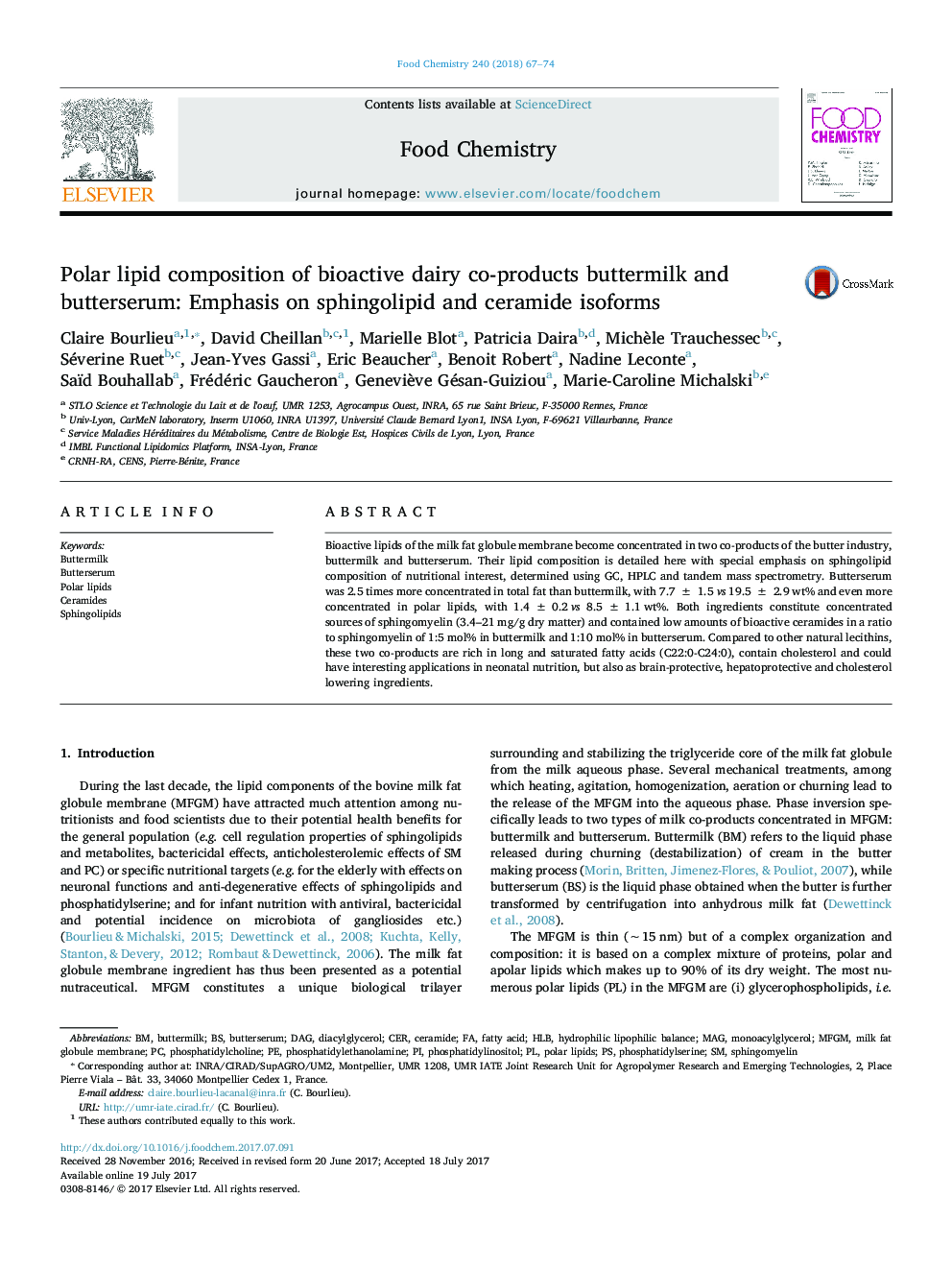| Article ID | Journal | Published Year | Pages | File Type |
|---|---|---|---|---|
| 5132445 | Food Chemistry | 2018 | 8 Pages |
â¢Buttermilks and butterserums are a concentrated source of sphingomyelin.â¢Very long chain isoforms (m/z > 758 g.molâ1) prevail in their sphingomyelin profile.â¢Both co-products contain low amounts of ceramides (10-14 µg.gâ1 total fat).â¢Their broad range of fatty acids up to C24:0 is unique among natural lecithin.â¢Butterserums are six times more concentrated in polar lipids than buttermilks.
Bioactive lipids of the milk fat globule membrane become concentrated in two co-products of the butter industry, buttermilk and butterserum. Their lipid composition is detailed here with special emphasis on sphingolipid composition of nutritional interest, determined using GC, HPLC and tandem mass spectrometry. Butterserum was 2.5 times more concentrated in total fat than buttermilk, with 7.7 ± 1.5 vs 19.5 ± 2.9 wt% and even more concentrated in polar lipids, with 1.4 ± 0.2 vs 8.5 ± 1.1 wt%. Both ingredients constitute concentrated sources of sphingomyelin (3.4-21 mg/g dry matter) and contained low amounts of bioactive ceramides in a ratio to sphingomyelin of 1:5 mol% in buttermilk and 1:10 mol% in butterserum. Compared to other natural lecithins, these two co-products are rich in long and saturated fatty acids (C22:0-C24:0), contain cholesterol and could have interesting applications in neonatal nutrition, but also as brain-protective, hepatoprotective and cholesterol lowering ingredients.
